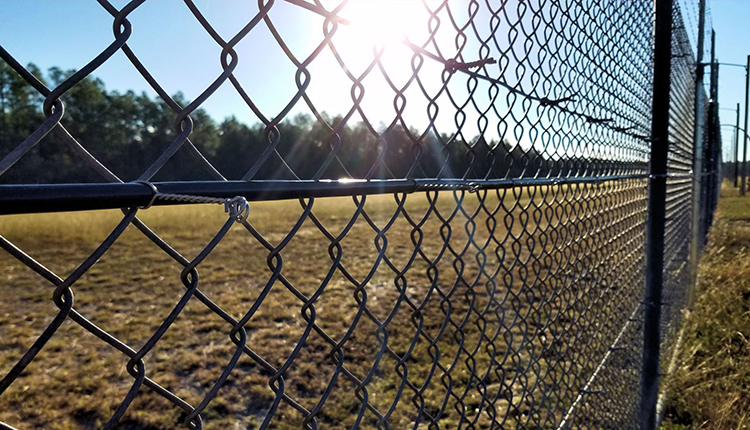How Fiber Security Helps Prevent Intrusions and Boosts Surveillance
How Fiber Security Helps Prevent Intrusions and Boosts Surveillance
Blog Article
The Ultimate Guide to Fiber Optic Security Systems for Your Company
In a period where safety issues are paramount for organizations, comprehending the complexities of fiber optic modern technology can be transformative. This overview outlines just how integrating fiber optic security systems not just enhances information protection yet likewise offers benefits like resistance to interference and real-time tracking capabilities.
Comprehending Fiber Optic Technology

The core of a fiber optic wire consists of a thin glass or plastic facility, surrounded by a cladding layer that shows light back right into the core. Single-mode fibers are designed for long-distance transmission, while multi-mode fibers are appropriate for much shorter distances, typically made use of within buildings.
Optical fiber are not just faster however additionally more protected than typical wiring. Their fundamental resistance to electro-magnetic disturbance and the trouble of tapping into the signal without detection make them a favored selection for businesses focusing on data integrity and protection. As companies progressively count on safe and secure and efficient interaction systems, understanding fiber optic technology becomes vital for educated decision-making.
Secret Advantages of Fiber Optic Protection
When thinking about security alternatives for a service, the benefits of fiber optic systems are specifically engaging. Fiber optic modern technology offers remarkable information transmission speeds and bandwidth capacity, making it perfect for managing high-resolution video feeds from monitoring video cameras. This capability makes certain that safety employees receive real-time data, boosting total response times to potential protection dangers.
Furthermore, fiber optic wires are naturally immune to electro-magnetic disturbance, which can jeopardize the honesty of conventional copper-based systems. This resistance makes certain that the information transmitted remains safe and uninterrupted, offering a more dependable safety and security framework. Furthermore, fiber optics are much less prone to physical damages, as they are made from glass instead of steel, minimizing upkeep costs and downtime.
One more significant advantage is the boosted scalability of fiber optic systems. As business demands progress, fiber networks can be easily broadened to suit extra safety and security gadgets without substantial overhauls to the existing infrastructure. Fiber optic systems use enhanced cybersecurity functions, including file encryption capacities that protect sensitive information from unapproved access. Collectively, these benefits make fiber optic security systems a durable option for services looking for to enhance their protection steps.
Installation Process and Factors To Consider
Taking into consideration the complexities included, the setup procedure of fiber optic safety systems requires careful preparation and execution. The initial step entails a detailed website assessment to identify optimal locations for cabling and tools. This evaluation ought to think about environmental elements, existing framework, and prospective susceptabilities.

Furthermore, the installment must adhere to neighborhood building regulations and market criteria. This might consist of coordinating with various stakeholders such as structure supervisors, IT groups, and safety workers to ensure seamless assimilation with existing systems.
Post-installation, rigorous testing is required to confirm system efficiency and identify any type of issues that may arise. By focusing on these considerations throughout the setup process, businesses can guarantee a durable and efficient fiber optic safety and security system that fulfills their specific safety demands.
Latest Innovations in Fiber Optic Safety
Current advancements in fiber optic innovation have actually dramatically enhanced the capabilities of protection systems for businesses. One of the most significant technologies is the assimilation of fiber optic sensing units that can detect resonances and intrusions along the boundary of a facility. These sensing units offer real-time tracking, allowing fast reaction to prospective breaches.
In addition, the advancement of distributed fiber optic picking up innovation permits the constant monitoring of big areas with a single fiber wire. This approach not only lowers installation expenses yet also improves the dependability of monitoring systems by removing the demand for several, different sensors.
Furthermore, advancements in multiplexing strategies have made it possible for companies to send huge amounts of information over fiber optic networks, enhancing the abilities of video clip surveillance systems. High-def video clip feeds can now be sent over lengthy ranges without loss of top quality, ensuring that protection personnel have access to clear and actionable info.
Last but not least, the usage of expert system (AI) in conjunction with fiber optic systems is transforming risk detection. AI algorithms can evaluate data from fiber optic networks to identify uncommon patterns or actions, permitting for aggressive protection procedures. These advancements jointly represent a significant leap onward in fiber optic protection modern technology.
Selecting the Right System for Your Company
Choosing the ideal fiber optic security system for your service read what he said is vital for making sure optimal protection and peace of mind. To make an educated choice, evaluate your particular safety needs, considering aspects such as the dimension of your properties, the nature of your procedures, and potential susceptabilities.
Begin by evaluating the degree of security required; for instance, risky atmospheres might necessitate sophisticated systems with integrated security and breach discovery capacities. Next, consider scalability; as your business expands, your safety and security system ought to can expanding to accommodate raised demands without significant overhauls.
In addition, explore the integrity and efficiency of different systems. Seek suppliers with well-known credibilities and client testimonies that vouch for their service top quality. It's likewise a good idea to ask about the modern technology's compatibility with existing facilities, ensuring a smooth assimilation process.
Final Thought
In conclusion, fiber optic safety systems provide a durable option for improving business safety infrastructures. The most current technologies even more bolster the performance of these systems, making sure that services continue to be secure and adaptable in an ever-evolving danger landscape.
Report this page